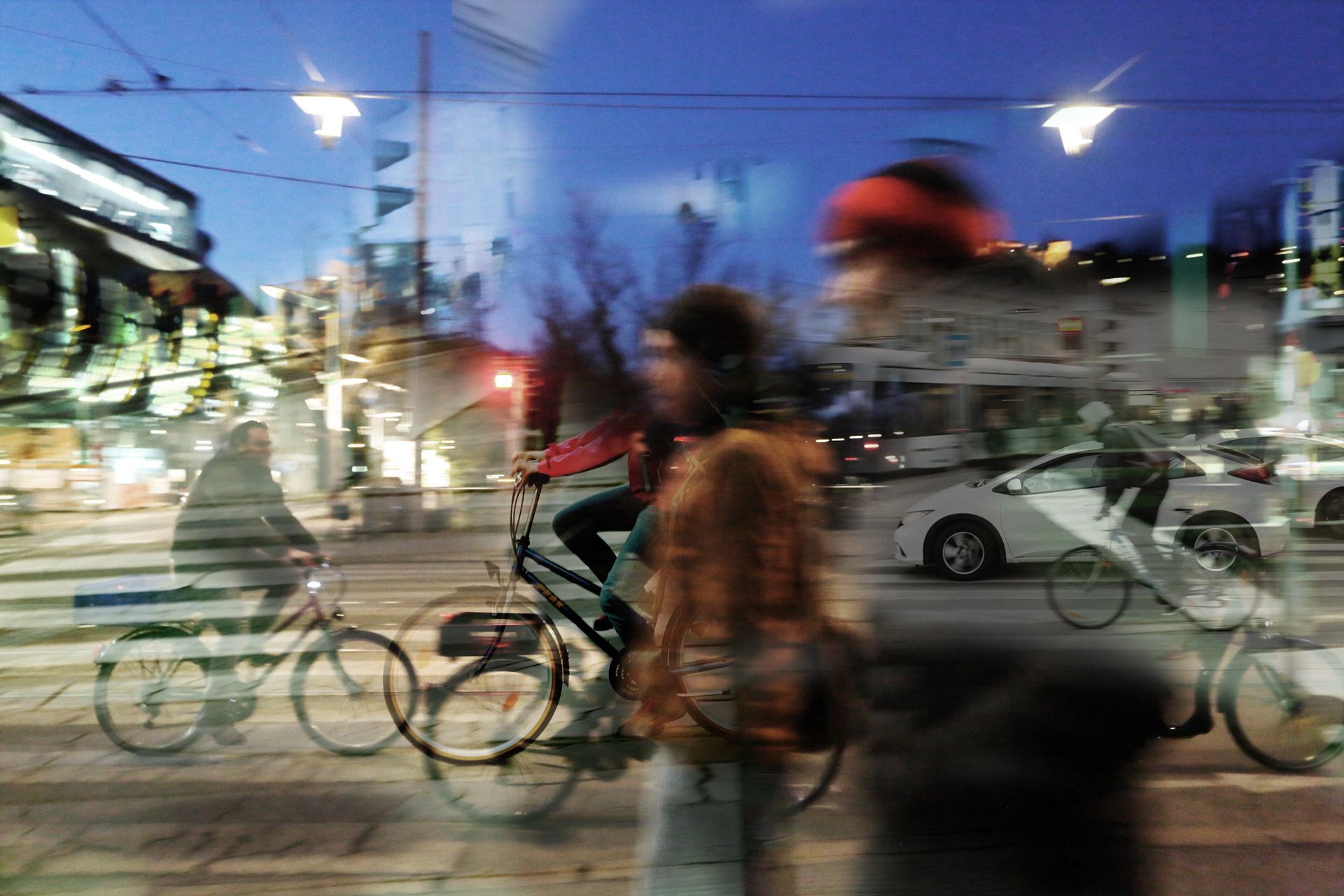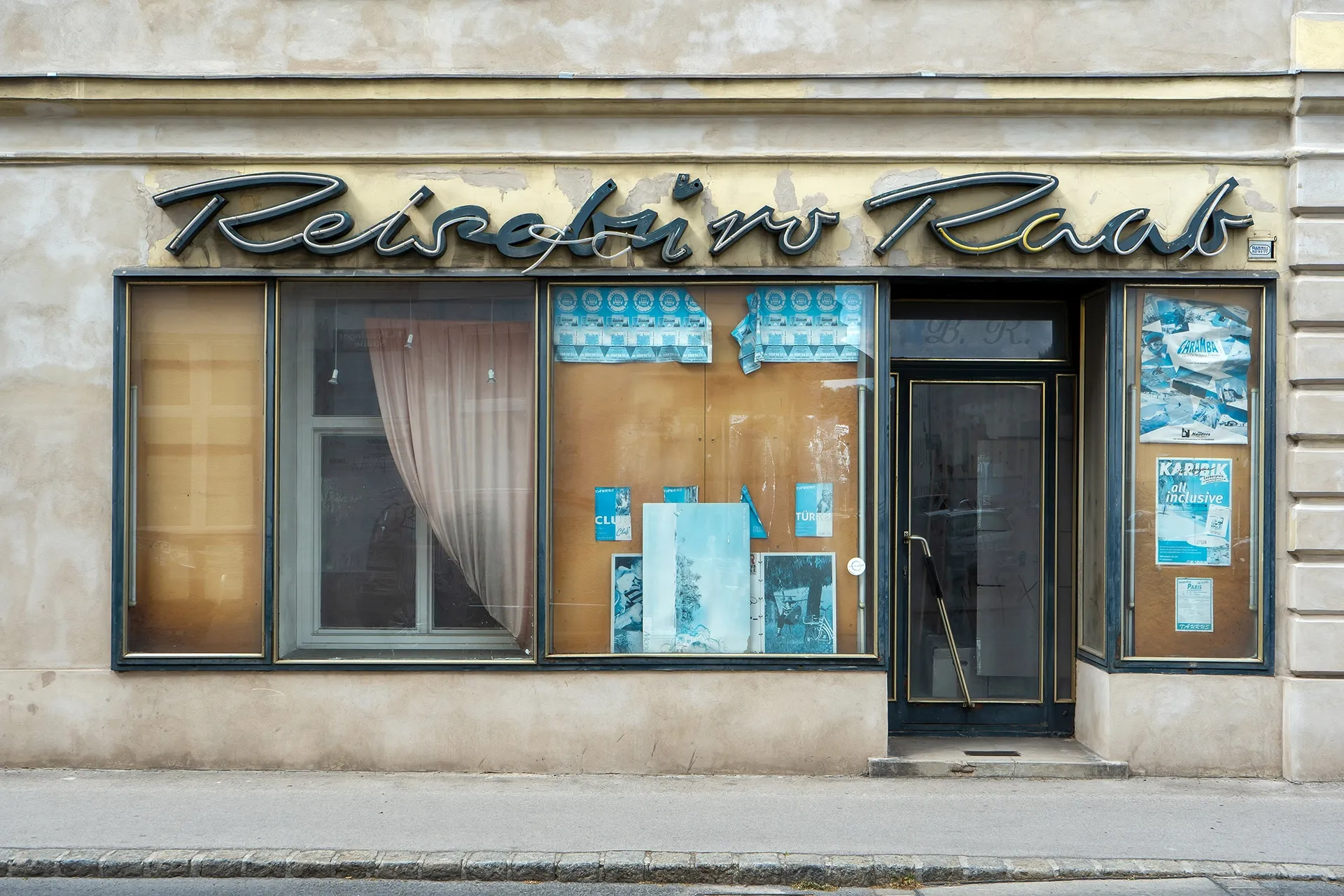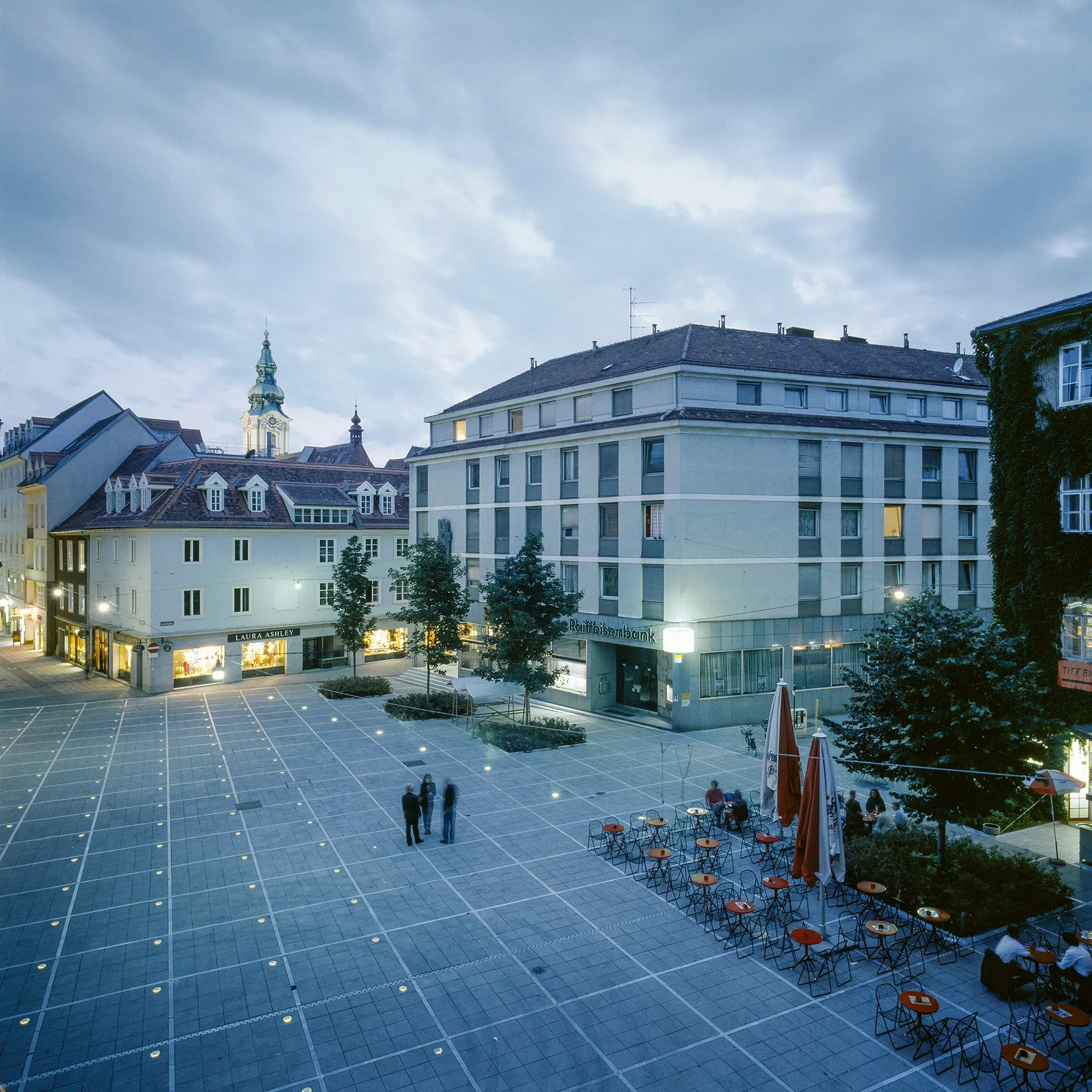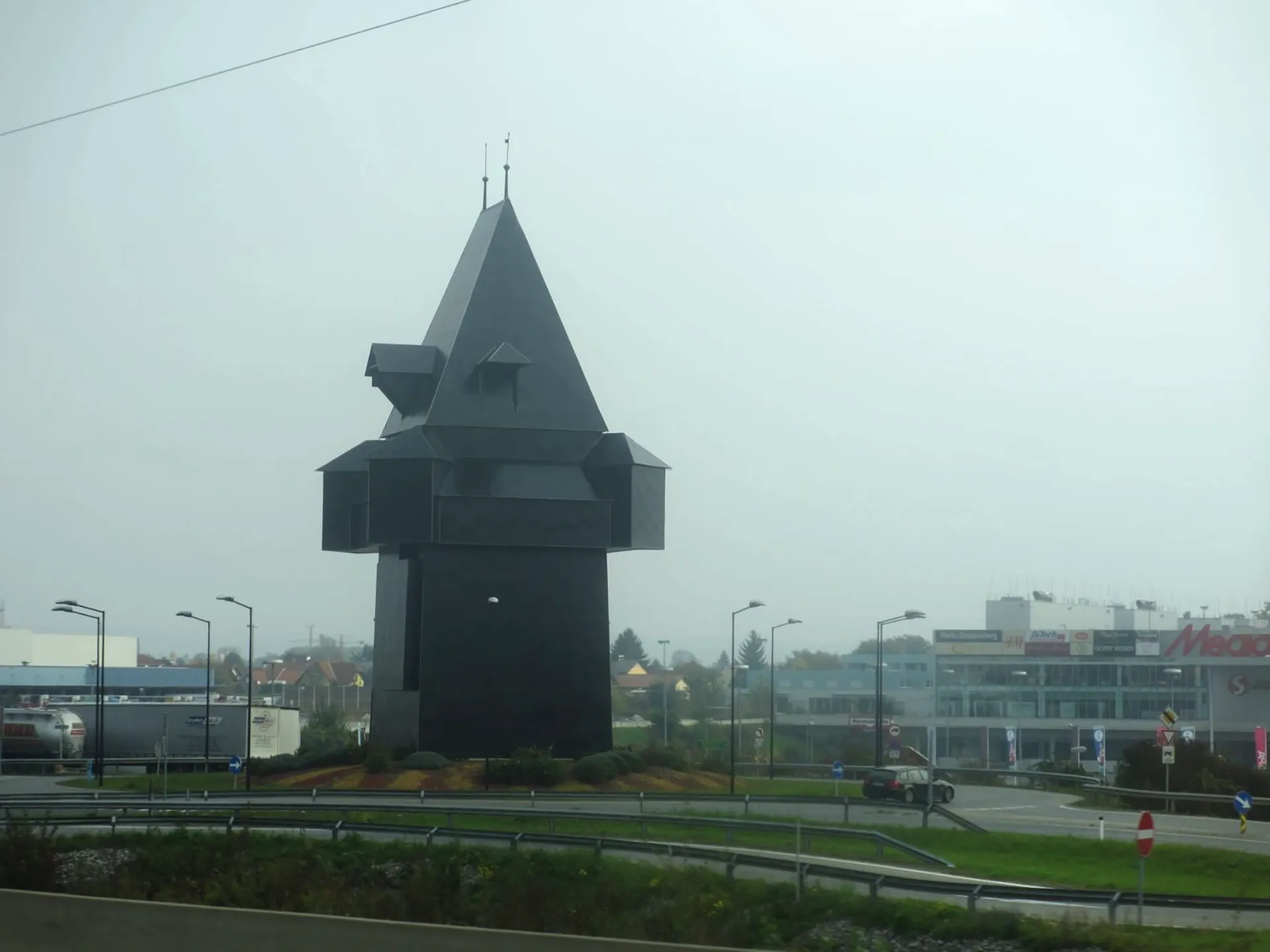Project of the century
In December, the Graz City Council is set to decide on the new city tunnel for the S-Bahn. If this democratically legitimised decision on the S-Bahn expansion is accepted, many questions arise regarding the further planning of this once-in-a-century project. The involvement of experts and the public will be crucial to its future viability
Project of the century
- Authors
Johannes Fiedler, Jördis Tornquist, Stoiser Wallmüller Architekten
- Published in
- Published
23.11.2022
- Related links
Bekanntmachung Stadt Graz
Thema bei Mein Bezirk
Thema im Der Standard
Thema in der Kleinen Zeitung
Thema in Die Krone

Graz goes mobile. Picture: © Max Wegscheidler
So now it's official: Graz wants the City Tunnel for the S-Bahn. At the beginning of November, the Graz City Hall coalition (KPÖ, Greens, SPÖ) agreed to implement the S-Bahn through the centre of Graz and specified a concrete route designed by Swiss transport expert Willi Hüsler from the main station via a new station at Jakominiplatz to the Ostbahnhof (picture). This decision, which draws a final line under all gondola and underground railway plans of recent years, should not be underestimated. It will have a massive impact on urban and regional development in the greater Graz area for decades to come.

Future suburban railway network for the city of Graz with connections to the central Styrian region, according to a study by Hüsler AG, PRIMEmobility and GVS, 07.11.2022
Firstly, the new City Tunnel, which is scheduled to be built in 2030 at the earliest, should be viewed positively as a commitment to the S-Bahn. The tunnel will strengthen the existing suburban railway network connecting the city and its surrounding areas, where public transport actually has the most to offer. While 45 per cent of the 700,000 daily inner-city journeys are already made by public transport, public transport accounts for just 15 per cent of the 450,000 daily journeys beyond Graz's city limits. For all those who commute to Graz by car every day, the suburban railway will soon be a real alternative for travelling directly from the surrounding area to the city centre without having to change trains. In addition, the City Tunnel is expected to be co-financed by the federal government, with a possible contribution of between 50 and 80 per cent.
From an urban development perspective, strengthening the S-Bahn network is also positive, as it will provide important growth impulses along all existing S-Bahn routes – which cover around 40 kilometres in the Graz city area alone. What's more, these routes run exactly where the city will develop in the future: in the south of the city. The new southern link on the southern outskirts between Raaba and Graz Airport, as envisaged in the suburban railway concept presented by Hüsler, will also be an important system connection for the dynamically developing expansion areas there.
However, it is also urban development that is the focus of criticism of the City Tunnel. On the one hand, the City Tunnel is based purely on transport considerations; aspects of urban development, i.e. the question of which urban areas should be accessible to the public not only today but above all in the future, have so far been completely ignored. And it is precisely the future that is at stake: the €3.1 billion City Tunnel is by far the largest public investment Graz has made since its founding. This investment needs to be well-founded if it is to survive future debates unscathed. It is already clear that criticism of the City Tunnel will focus primarily on the fact that this new underground connection duplicates existing tram lines, but also on the fact that its route, which runs through a densely built-up urban area, will not generate any new growth momentum for the city. In addition, the City Tunnel will further cement the already problematic centralisation of public transport in Graz. Jakominiplatz will remain the central hub and will have to cope with additional traffic – we are talking about around 100,000 new S-Bahn passengers per day.
At this point, it is also necessary to ask the structural question once again: does Graz need new transversal or tangential connections for public transport? The S-Bahn is a regional means of transport, suitable for the urbanisation of suburban districts and their connection to the surrounding area – see Paris, Berlin, Munich. In Graz, we must recognise that the city centre is no longer the ultimate destination for all journeys. Instead, everyday life is about accessibility to major institutions such as the Chamber of Commerce, the university and the regional hospital, and about integrating the large residential areas in Waltendorf and St. Peter into the regional context. It is also about counteracting the flourishing and self-reinforcing car system in the suburbs of Graz. In other words, Graz needs an S-Bahn belt in the east of the city, but also east-west connections in the southern urban areas. Against this backdrop, the transverse City Tunnel does not contribute to a forward-looking urban structure.
The new City Tunnel is to be decided upon by the municipal council in December 2022. If one wishes to take note of this democratically legitimised decision, many questions arise for the further planning of this major project.
Firstly, in terms of transport: how can the S-Bahn be made a real success by increasing the frequency of services, by upgrading S-Bahn stations in and around Graz to attractive, intermodal transfer points, but also, in the medium term, by building additional S-Bahn lines in currently underserved urban areas? Is it possible to imagine a combination of both, i.e. transversal plus tangential, and if so, what is the correct sequence? But what push measures will also be needed to encourage more people to switch to the S-Bahn – keyword: regional motorised individual transport toll, reduction in the number of parking spaces, dismantling of multi-lane roads, comprehensive 30 km/h speed limit?
Then there is urban development and urban planning: how can the expected growth impulses along the S-Bahn network be used to develop Graz and its surrounding area – after all, 637,000 people live in this conurbation – into a coherent settlement area that is also conceived in urban terms (keyword: ‘Grand Graz’)? How can the newly emerging sub-centres around the suburban railway stations, particularly in the Graz urban area, be used to relieve the city centre and develop Graz into a polycentric city? What urban qualities do we expect in these new centres in terms of building density, building height, public space, but also in terms of programmatic offerings such as public facilities, education, work and leisure?
In addition, architectural questions are already arising with regard to the future main transport hubs of the new S-Bahn network – Jakominiplatz, Hauptbahnhof, Ostbahnhof and the local transport hub Gösting. What design significance should public space have in these locations in the future, and what significance should transport have? Questions of structural redensification around all of the above-mentioned main transport hubs should also not be taboo.
Last but not least, questions of distributive justice also need to be clarified. If private individuals benefit from the increase in value along the S-Bahn network expanded by the public sector, the question must be asked as to how a share of this increase in value can be returned to the public sector. The instrument of planning compensation, which is already being used successfully in several countries such as Switzerland, can provide answers here.
With its commitment to expanding the suburban railway network in the city area, Graz has made an important fundamental decision for the future of the city and its surrounding area. However, the work on the meaningful implementation of this decision is only just beginning. It will be essential for the future viability of all further planning by the city of Graz to involve experts from all the above-mentioned fields – urban development, urban planning, transport planning and architecture – but also to seek public debate in order to create the necessary public support for this project of the century.

Use vacant properties!
Vienna is growing, yet at the same time, spaces for living, culture, education, and commerce remain vacant. In the fall of 2024, a broad alliance of Viennese and nationwide architectural and cultural institutions organized a three-part discussion series entitled "Utilize Vacancies! Ways to activate vacant properties in Vienna." The discussion series was accompanied by considerable media interest and, in the run-up to the 2025 Vienna state and municipal elections, placed the recording and use of vacant properties in Vienna on the political agenda. The discussion series is based on a catalog of demands that summarizes numerous measures for activating vacant properties in Vienna

SOS Tummelplatz
In a few days, on 27 June 2023, the "Redesign Tummelplatz" competition will be decided. The jury meeting that decides the competition is probably the last chance to discuss whether the Tummelplatz should actually be redesigned or rather renovated. An appeal to the competition jury.
